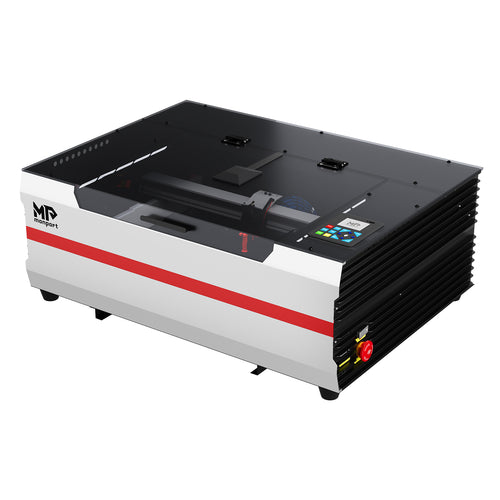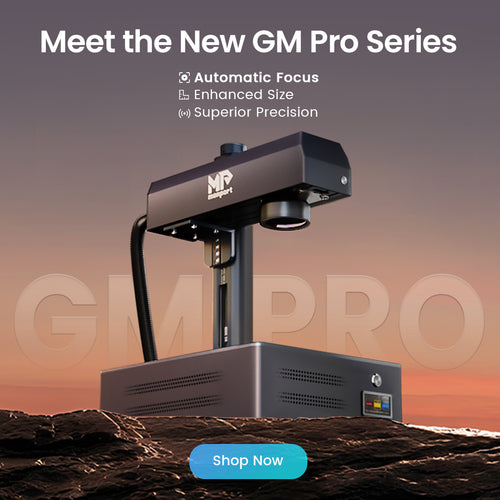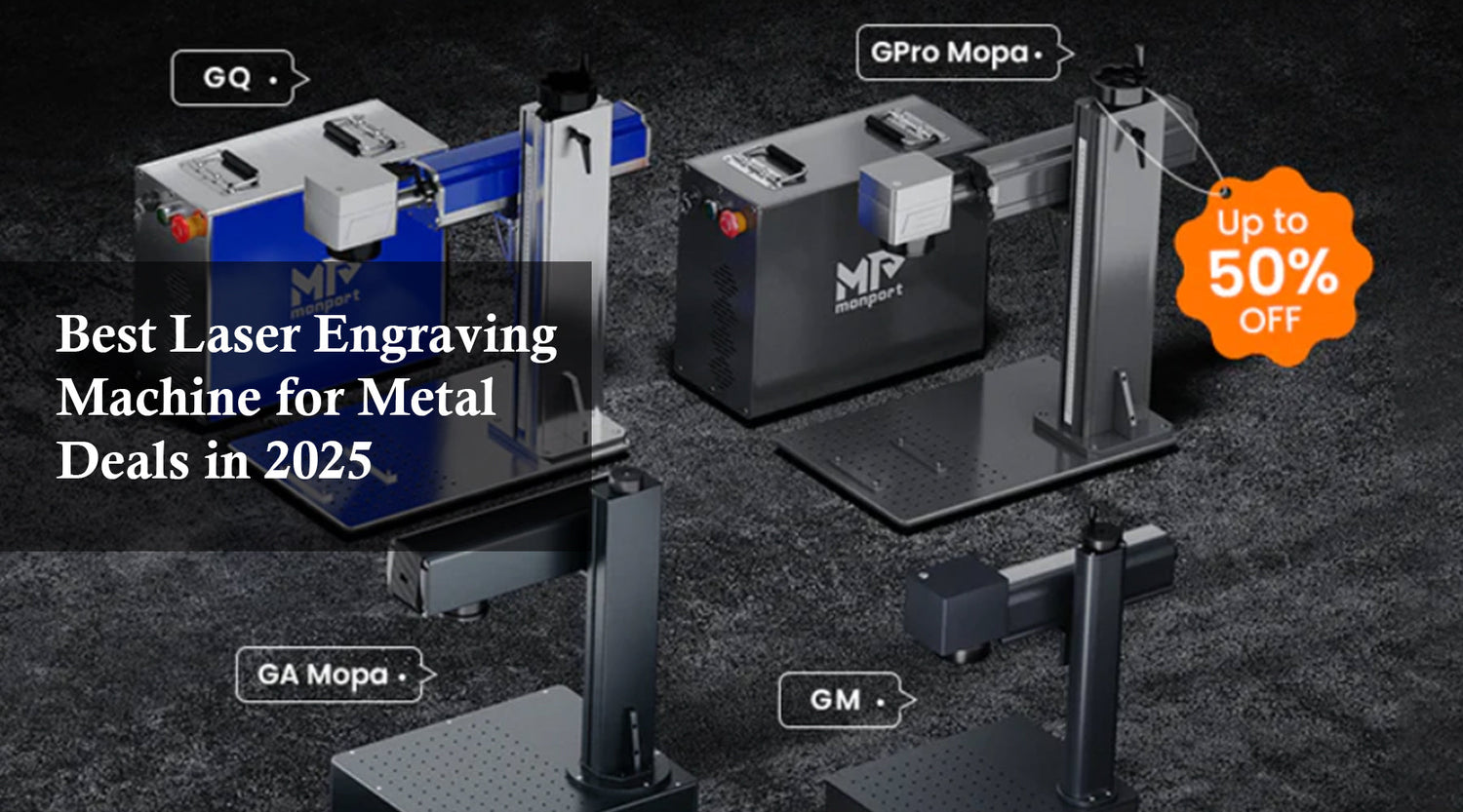Understanding the 200W MOPA fiber laser engraver and how it compares to a split fiber laser engraver can completely change your metal marking experience. In this comprehensive guide, you’ll learn how to choose, operate, and maximize your engraver for professional and industrial results. Whether you are marking jewelry, barcodes, or logos, this article helps you understand why the Monport GPro 200W MOPA Fiber Laser Engraver is a breakthrough for precision and efficiency.
Monport GT 200W Split MOPA Fiber Laser Engraver & Color Marking Machine With AutoFocus
Understanding the Basics of Split Fiber Laser Engraver Technology
A split fiber laser engraver is a popular option among small workshops and industrial users due to its modular design. The system typically consists of a separate laser source, scanner head, and control unit. This design allows flexible operation and easy integration into various work environments. However, compared with the 200W MOPA fiber laser engraver, the split system may offer less color control and slower marking speeds.
The split fiber laser engraver works well for engraving metals like aluminum, stainless steel, and brass. It can produce clear, deep engravings but sometimes struggles with achieving vibrant color results. Meanwhile, the 200W MOPA fiber laser engraver allows full control of pulse duration and frequency, offering exceptional marking precision and vivid colors on anodized aluminum and other coated materials.
When deciding between a split fiber laser engraver and a 200W MOPA fiber laser engraver, it’s essential to consider what kind of results you want — high-speed deep engraving or versatile color marking.
The 200W MOPA Fiber Laser Engraver: Key Features and Power Explained
The Monport GPro 200W MOPA fiber laser engraver is designed for advanced marking needs. Its pulse-width adjustability allows users to engrave on a wide range of materials including titanium, aluminum, and stainless steel. Unlike a split fiber laser engraver, the 200W MOPA fiber laser engraver provides enhanced stability for industrial-scale production and fine color transitions.
With its higher wattage, this 200W MOPA fiber laser engraver can cut deeper and faster, making it ideal for professional engraving tasks that demand accuracy and speed. The adjustable parameters make it suitable for marking everything from serial numbers to creative graphics.
Monport’s engineering focuses on energy efficiency and user-friendly controls. Compared to the split fiber laser engraver, users report faster setup time, quieter operation, and more consistent results even on challenging surfaces.
Monport GT Series Split & MOPA Fiber Laser Engravers with AutoFocus
Below is a detailed overview of the Monport GT Series, ranging from entry-level models like the GT30 to industrial solutions like the GT200. Each fiber laser engraver with AutoFocus is designed for specific workloads, ensuring you find the perfect balance between power, precision, and efficiency.
| Model | Laser Power | Engraving Area | Max Engraving Speed | Color Engraving | Frequency Range (kHz) | Pulse Width (ns) | Marking Depth (mm) | Cooling Type | Focus Mode | Weight (kg) | Material Compatibility | Best Use Case |
|---|---|---|---|---|---|---|---|---|---|---|---|---|
| GT30 | 30W Split Fiber | 110×110 mm | Up to 7000 mm/s | No | 20–80 | Fixed | 0.1–0.3 | Air Cooling | Manual | ~30 kg | Metals, Plastics | Entry-level engraving and serial marking |
| GT50 | 50W Split Fiber | 200×200 mm | Up to 8000 mm/s | Partial | 20–80 | Fixed | 0.2–0.5 | Air Cooling | Manual | ~35 kg | Metals, Plastics | Small business or light industrial use |
| GT60 | 60W Split Fiber | 200×200 mm | Up to 9000 mm/s | Partial | 25–120 | Fixed | 0.3–0.8 | Air Cooling | AutoFocus | ~40 kg | Metals, Coated Materials | Mid-level production and deeper marking |
| GT80 | 80W Split Fiber | 300×300 mm | Up to 10,000 mm/s | Yes | 25–200 | Adjustable | 0.5–1.0 | Air Cooling | AutoFocus | ~45 kg | Metals, Anodized Aluminum | Multi-purpose color marking and precision engraving |
| GT100 | 100W MOPA Fiber | 300×300 mm | Up to 10,000 mm/s | Full Color | 25–1000 | Adjustable | 0.5–1.2 | Air Cooling | AutoFocus | ~50 kg | Metals, Plastics, Coated Surfaces | Professional engravers seeking vivid colors and speed |
| GT200 | 200W MOPA Fiber | 300×300 mm | Up to 12,000 mm/s | Full Color | 25–1000 | Adjustable | 1.0–2.0 | Air Cooling | AutoFocus | ~55 kg | All Metals, Coated Surfaces, Plastics | Heavy industrial and mass-production engraving |
Choosing the Right Monport GT Engraver
-
GT30 / GT50: Ideal for beginners and small studios needing clean, precise markings without high costs.
-
GT60 / GT80: Perfect for growing businesses and workshops wanting faster output and deeper engravings.
-
GT100: Great for professionals requiring color engraving and efficient production.
-
GT200: Built for industrial operations demanding maximum engraving depth, speed, and precision.
The Monport GT Series Fiber Laser Engravers with AutoFocus combine durability with user-friendly control, ensuring consistent results from small crafts to large-scale industrial projects.
Engraving Project Examples with the 200W MOPA Fiber Laser Engraver

One of the most exciting advantages of the 200W MOPA fiber laser engraver is its creative flexibility. Here are some applications where it outperforms the split fiber laser engraver:
-
Jewelry Customization: Create fine text and color gradients on gold, silver, and titanium.
-
Industrial Tags and Serial Plates: Mark durable, high-contrast labels with lasting legibility.
-
Barcode and QR Code Engraving: High-speed production with precise readability.
-
Anodized Aluminum Art Projects: Produce detailed, colorful designs impossible with a standard split fiber laser engraver.
-
Logo and Branding Engraving: Achieve multi-tone effects for premium product finishes.
Each of these projects highlights why the Monport GPro 200W MOPA fiber laser engraver is ideal for both industrial and creative professionals seeking clean, vivid results.
GT Split Fiber (30W & 50W) vs. GT MOPA Models (60W–200W)
Functionality
-
GT Split Fiber (30W & 50W) machines are built for straightforward, high-contrast marking. They have fixed pulse widths and are ideal for engraving text, serials, barcodes, and basic logos. Their autofocus function ensures ease of use, while air cooling keeps maintenance minimal. However, they cannot perform color marking and have less flexibility in pulse control.
-
GT MOPA (60W–200W) models, on the other hand, feature adjustable pulse width and frequency, enabling color marking on metals like titanium and anodized aluminum. These machines deliver more creative control, higher speed, and deeper engraving. With frequency ranges up to 3,000 kHz and pulse widths as short as 2 ns, they are perfect for advanced, detailed, and decorative engraving.
Precision
-
Split Fiber models offer precision at 0.01 mm, providing crisp and reliable marks suitable for identification codes and everyday engraving tasks. However, due to their fixed pulse width, they cannot fine-tune heat distribution or surface oxidation for color effects.
-
MOPA models match the same 0.01 mm accuracy but outperform in micro-engraving and color detail control. Adjustable pulse shaping allows for texture and gradient effects, making them ideal for industries requiring aesthetic precision and consistent color output.
Applications
| Category | GT Split Fiber (30W & 50W) | GT MOPA (60W–200W) |
|---|---|---|
| Marking Type | Single-tone, deep marking | Color & tonal marking |
| Best Materials | Metal, coated metal, plastics | Metal, anodized aluminum, titanium |
| Production Scale | Small to medium | Medium to large, industrial |
| Creative Work | Basic text/logos | Multi-color designs, fine branding |
| Depth Capability | 0.15–0.18 mm | 0.18–0.20 mm single-pass |
| Ideal Users | Workshops, repair shops, product labeling | Professional engravers, factories, designers |
| Software Compatibility | LightBurn, BslAppSimple | EZCAD, LightBurn |
| Investment Range | Entry-level | Professional / industrial |
Ready to upgrade? Get your Monport GPro 200W MOPA Fiber Laser Engraver today and experience unmatched precision.
Key Takeaways
-
The 200W MOPA fiber laser engraver delivers better speed, precision, and color control.
-
The split fiber laser engraver remains a budget-friendly choice for basic marking needs.
-
For industrial and creative users, the Monport GPro 200W MOPA Fiber Laser Engraver is the most efficient and future-ready choice.
-
Adjustable pulse width is the key difference that unlocks color and depth customization.
-
Long-term reliability and reduced maintenance make it a solid investment.
Q&A: Everything About the 200W MOPA Fiber Laser Engraver
Q1: Can the 200W MOPA fiber laser engraver handle both color and deep engraving?
Yes. Unlike the split fiber laser engraver, the MOPA design enables fine-tuned pulse control for both effects.
Q2: What materials work best with the 200W MOPA fiber laser engraver?
It engraves metals, anodized aluminum, and coated plastics with excellent precision.
Q3: How long does the Monport GPro 200W MOPA fiber laser engraver last?
It has a lifespan of up to 100,000 hours with minimal maintenance.
Q4: Is it suitable for mass production?
Absolutely. Its high-speed performance and advanced software make it ideal for industrial use.
Q5: Where can I buy or learn more?
Visit MonportLaser.com to shop or explore setup guides, tips, and live demos.
Conclusion
Choosing between a split fiber laser engraver and a 200W MOPA fiber laser engraver depends on your production goals — but if you value speed, precision, and vibrant results, the Monport GPro 200W MOPA Fiber Laser Engraver is clearly the superior choice. Its pulse-width control, faster output, and compatibility with both EZCAD and LightBurn make it ideal for professionals who demand versatility.
While a split fiber laser engraver offers affordability and reliability for simple engraving jobs, it cannot match the advanced control and color capabilities of a 200W MOPA fiber laser engraver. From jewelry artisans to industrial manufacturers, anyone seeking fine detail and long-term stability will benefit from upgrading to Monport’s latest generation.












